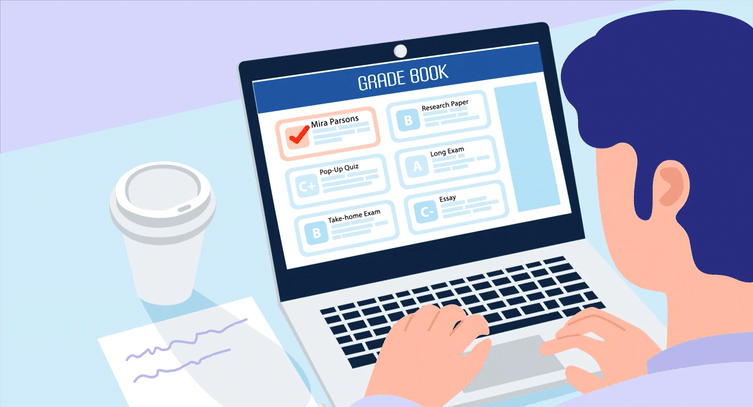
Interoperability—the ability of software programs to seamlessly connect to one another by seamlessly exchanging information and common language—is something we’ve been steadily working towards in edtech. Plenty of progress has been made, but in many ways it feels like we’re only starting to scratch the surface of what’s possible, and the work that needs to be done to get there.
At the same time the interoperability conversation continues, we’re also smack-dab in the middle of a new era of teaching and learning in K12 schools. More learning is happening outside of school buildings than ever before. Teacher happiness and retention continue to be a high priority, with a big part of that happiness focused on cutting down and streamlining tedious administrative tasks so teachers can maximize their time.
A strong student information system (SIS) can be a cornerstone of your district’s educational data, creating ways to communicate with parents, monitor progress, manage remote learning, and support staff all in one swoop. However, we also know that your SIS is just one piece of the edtech interoperability puzzle. So, let’s explore the current discussion and increasing importance around the need for edtech interoperability in K12 schools:
Read: EdTech Playbook: Interoperability
Interoperability and Remote Learning: The Continued Push for Open Standards
Remote learning—in some form—is here to stay, and to prepare for the classroom of the future, many schools and districts invested heavily in edtech platforms to engage students and fill in learning gaps. However, more edtech often leads to an increase in siloed information—unless the platforms have made it their mission to adopt open standards for interoperability.The call for edtech that prioritizes interoperability has been louder than ever before, with a national snapshot from the IMS Global Learning Consortium showing that schools and districts that prioritized interoperability open standards when choosing digital tools and resources were able to make a more seamless shift to remote learning.
In March 2021, IMS took the facilitation of open standards to the next level with the launch of their Standards First program. Educational institutions and edtech suppliers alike are encouraged to sign the pledge, which demonstrates advocacy, transparency, and trust over the shared goal of open standards.
Interoperability and Reducing Administrative Burden: Hi, Ed-Fi!
Speaking of open standards, let’s talk about Ed-Fi. Ed-Fi is a set of data standards that allows the platforms K12 schools use the most—student information systems, learning management systems, assessment systems, and more—to integrate and talk to each other through a common language. These standards allow schools to use the best tools for different jobs while still being able to gather all the data for a single student within a SIS.On the flipside, what does it look like when a student information system is designed with data standards for interoperability in mind? In short: less administrative tasks, and more actionable insight. It means your district can send in-progress grades to other systems you use and not have to wait until the end of the quarter or semester when grades are finalized. Student information that’s accessible and safeguarded, even as technology changes. Data that can be easily analyzed, leading to better instructional decisions.
New Interoperability Research: Project Unicorn’s “State of the Sector” Report
Despite the ability of data interoperability to create efficiencies and reduce complexity for teachers and administrators, there hasn’t been much data on the capabilities and infrastructure schools and districts have to make it a reality—until now.
In October 2021 Project Unicorn, an effort focused on improving the adoption of industry-adopted data interoperability standards in the K12 edtech space, released its “State of the Sector” report. This first-of-its-kind industry report is based on results from the School System Data Survey launched this spring and features data from over a hundred educational agencies.
The report looked at six domains—governance, procurement, leadership and vision, technology and infrastructure landscape, implementation fidelity, and impact on educational environment—and found several key findings, including:
- Many district leaders are unaware of interoperability standards or how they might be applied in their school system,
- The governance domain had the least amount of support and resources,
- School systems that have established procurement practices around edtech tools are further along when it comes to using interoperability standards and protecting student data privacy, and
- Districts want more data-driven decision making, but lack support, especially when it comes to funding.
- This report provides a great starting point for understanding edtech data interoperability trends and adoption over time—leading to support around the most pressing challenges and opportunities for schools and districts.
Follow-up Resources: More on Interoperability and Integration:
EdTech Playbook: InteroperabilityPlaying Nice: The EdTech Interoperability Landscape
The Golden Rule of Interoperability
Let’s Change the Integration Conversation
The 5-Step EdTech Integration Checklist
WHAT'S NEXT FOR YOUR EDTECH? The right combo of tools & support retains staff and serves students better. We'd love to help. Visit skyward.com/get-started to learn more.

|
Casey Thompson Web & Digital Media Manager |




